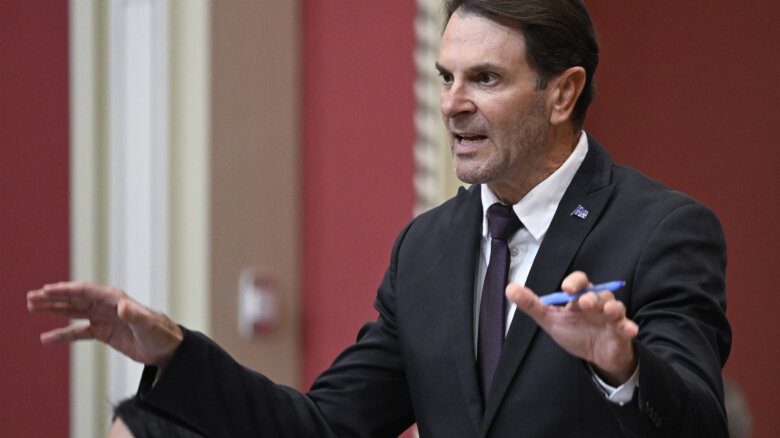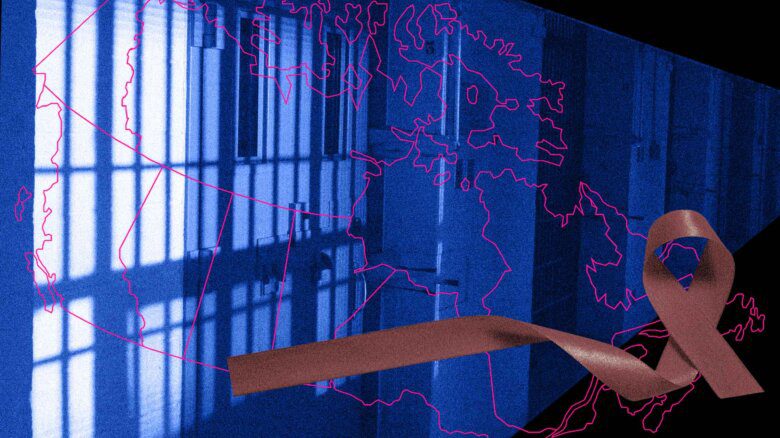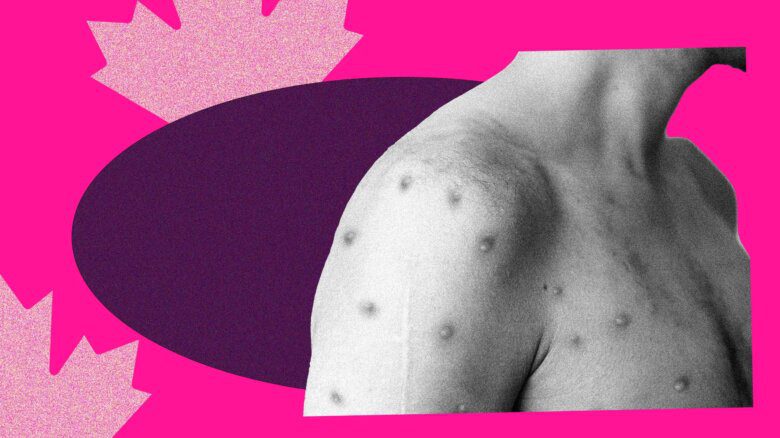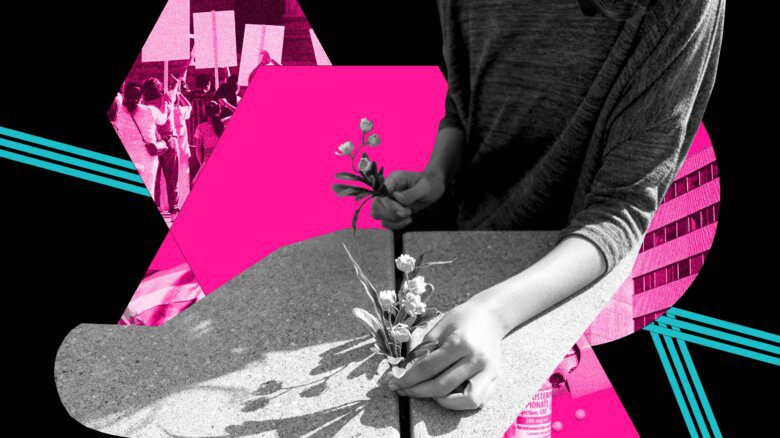Some of my favourite experiences in the San Francisco Gay Men’s Chorus have been through our K-12 education program, RHYTHM: Reaching Youth Through Music. It’s profoundly inspiring to hear today’s LGBTQ2S+ youth navigating queer identities with such a rich vocabulary and official support from their peers, teachers and school administrators. I didn’t have any of that as a kid—and I grew up in a very supportive, liberal enclave of NASA scientists and engineers in Houston. In the late ’90s and early 2000s, some of us were out and queer, but we didn’t have groups of out queer adults coming to schools and telling us stories about growing up, navigating bullies and finding true love and acceptance as adults. When my high school started a Gay–Straight Alliance (GSA), I of course showed up, in awe that it even existed—and there were maybe five of us at that first meeting, out of 3,000 students.
Today, it’s a different world. Many GSAs have renamed themselves to Gender-Sexuality Alliances or Queer Student Alliances (QSAs). Twenty years ago, I didn’t even think to say, “Hey, I’m bisexual, where do I belong here?” Twenty years ago, I had no idea I was trans, and wouldn’t have known where to find role models. But it’s not just a linguistic shift. It’s also about the broader move toward affirming, liberatory spaces for all youth—across gender, sexuality, race and ethnicity, class, ability and all of the other intersections of identity that shape who we are.
COVID-19 has made all of this organizing more complicated. While digital spaces can create more access to resources or community, they also presume the equitable distribution of internet connection and laptops and a safe space at home to discuss queer issues away from hostile ears. While in-person spaces can provide a safe haven away from unsupportive families, they can create serious health risks, particularly for unvaccinated and immunocompromised children.
Melanie Willingham-Jaggers is the interim executive director of GLSEN, the teacher-founded non-profit that sparked the GSA movement in 1990. I interviewed Willingham-Jaggers about the promises and challenges associated with organizing queer, liberatory spaces for students in the midst of the pandemic and the struggle to build and maintain a healthy, multiracial democracy.
Can you introduce GLSEN for readers who aren’t familiar?
GLSEN has been around since 1990, and we sit at the intersection of education, civil rights and LGBTQ+ justice. Our work is to advocate for the safety and affirmation and full inclusion of LGBTQ2S+ youth.
We have many founders, but two stories stick out. Kathy was a PE teacher—an associate athletic director—who saw a young woman walking across the quad at a private high school outside of Boston. This young person had a pink triangle on her jacket. Kathy was queer but couldn’t be out at work because she was afraid of being fired or ostracized. She thought, “Wow, if this young person could be that brave, the least I can do is meet this student’s bravery and help make space for young people.” They were coming out more and more in the late 1980s, early 1990s.
And then our founding executive director, Kevin Jennings, was a classroom teacher for many years. He remembers the day a young woman came up to him and said, “I have two moms. And the way that I hear my family and other gay people being talked about, I really can’t take it.” She was on the verge of suicide. Kevin said, “Listen, you’re straight, I’m gay, let’s form an alliance. We’re going to work together to change what it means to be queer in schools.”
And that was the formation of the first Gay–Straight Alliance. So GLSEN’s legacy is adults seeing the bravery and boldness of students and looking to meet that bravery and to meet that boldness by creating safe and affirming spaces in school.
Fast forward 31 years, and our work continues to support students and to focus on systemic change. We provide resources to educators on the front line, and we are in conversation with government, administrators and educators. We advocate and fight for policy solutions that help to give teachers and other administrators the tools they need to help make schools safe and affirming for queer kids.
That’s beautiful. I studied policy in school and it’s close to my heart. How has the path expanded from meeting the bravery of students to more systemic change? How does your work look different today, 31 years after the first GSA?
The trajectory of the LGBTQ+ movement and how things have accelerated in terms of people being out, people showing up with pride everywhere—it’s unheard of. I’m just under 40, and when I was a seven or eight years old, I thought, “I don’t know anybody gay, I don’t know what gay is exactly, but I can’t be that.”
Now, young people are coming out and having conversations with themselves, with their parents, with caring adults in their lives about gender identity. I have two little niblings. One of their pronouns are they/them. I’m living for this little nine-year-old who is exploring their gender identity in real time with their parent and other adults who love them. May they find exactly who they are, whoever that is.
Back in 1990, it was illegal to be gay in 24 states. You could be arrested or jailed. And of course you faced violence and harassment, even as an adult. Bullying was an accepted part of growing up. If you were queer, or if people thought you were queer, facing violence in school was seen as normal and a thing no one could change. And it was a thing that both students and adults participated in. And then finally, if you identified as queer at work, you could lose your job. And there was no recourse. That was the world that GLSEN emerged from, and so the original job for us was to stop bullying. From there, we moved to creating positive spaces. What’s the positive side of an absence of violence? It’s affirmation.
Does affirmation factor into where you would like to see spaces for queer youth head next?
Where we are now is asking: What does it mean for schools to be liberated spaces, free from harm, full of safety, and where what every person needs to thrive is the baseline? What does it mean for every student to walk in and receive what they need to thrive? What does it mean for education to be a liberating experience?
At the risk of sounding a little bit hyperbolic, our democracy is at stake. We need young people to come through education and at the end of it, be prepared for the world, be prepared for life, be connected to those around them and be ready to smartly and responsibly engage in a multiracial, vibrant democracy.
When we’re talking about safety and affirmation for LGBTQ2S+ youth, we’re really talking about a multilayered and intersectional understanding of what it means to make sure that every young person has full access to school life.
I don’t think it’s hyperbolic at all to say that our democracy is at stake. If there’s anything we’ve learned in the past few years, it’s that this is a full-blown crisis, and how important it is that absolutely everyone votes. Whether we’re talking about absurd voting restrictions or bullying and intimidation or how we draw our districts to disenfranchise people, it’s a full-blown crisis right now.
Our American democracy has long been predicated on who is excluded. I’m so particularly thankful for this generation of leaders. I’m nearing 40. It feels good to trust that the grown-ups in the room are mindful and working to expand our democracy so that everyone can participate. There have long been people fighting for this, but I think for the first time it’s intersectional.
The LGBTQ+ space is a place I occupy in my personal life and my activism, but for a long time I’ve worked in other parts of the social justice movement. And to bring all of this together—it’s about racial justice, gender justice, disability justice, economic justice and all of these are queer issues. This feels like a new and unique moment. I’m really happy that GLSEN and many other LGBTQ+ orgs have our eyes open about it.
Me too. Practically speaking, what are students experiencing right now? What are you hearing on the ground as we go back to school in person?
This has been the most disrupted return to school in living memory. What the novel coronavirus has done to our country has created a prolonged disruption everywhere. We’re nearing two years of this reality. As a result, we’re all coming back having lost loved ones or knowing people who have passed away. No one is untouched by COVID-19.
What it means for me as a near-40-year-old to have lost a loved one is different than what it’s going to mean for a seven-year-old or a 13-year-old. We are all walking back into the world with this heavy load, this trauma, this heartbreak.
All the structural issues—things we’ve had to resolve for a very long time to make sure students are safe in their minds, hearts and bodies—are still there. They never left the school. But we’re returning heartbroken in a way that is new and different.
And the pandemic is continuing in a way that feels uneven. It’s happening for everyone, but different people are responding to it or denying it in different ways. There is this real schism, this real dissonance in reality that’s happening, that is having a major effect on all people, but particularly our young people.
“About 70 percent of children who are survivors of people killed by COVID-19 are kids of colour.”
Given that combination of sadness, personal trauma and structural factors, what can students, educators and parents do now to support students? And on the policy front, what’s happening to support students, educators and parents?
It’s necessary for everyone to lean in with support for students. One in every 500 people in this country has died from COVID-19. And about 70 percent of the children who are survivors of people who have been killed by the novel coronavirus are kids of colour.
The adults are also coming into the school year holding all of this pain and trauma and sadness. The reason that we have spent the last 30 years at GLSEN coming up with policies that will support and affirm our young people is because in moments like this, when everyone is stretched to their max, we want to have rules and systems to support us. Rules, policies and culture give us structures to lean on so we don’t have to take individual action all the time.
I’m just going to point back to our four supports at GLSEN: supportive educators, supportive policies, supportive peer spaces and inclusive curriculum.
If something goes wrong, young people can rely on supportive educators to have their back, and supportive policies to help make it right. They can have supportive, culturally affirming peer spaces where their intersectional identities can come out and flourish. And then they can see themselves reflected in the inclusive curriculum. Our young people need to be able to rely on the curriculum to reflect an accurate and true telling of themselves, of their communities, of families like them.
Education is the cornerstone of a healthy, robust democracy. In this moment, it’s a key touch point to keeping a whole generation from falling into deep despair and dislocation. We have to get this right. And that’s what makes this back-to-school season and the reemergence into in-person learning so important.
Tell me more about supporting educators.
We know we can’t have good schools without good teachers. If we want our young people to be taken care of, we’ve got to take care of our educators. And so many educators already feel like they’re drowning.
Just like our bridges and roads across the country are showing wear and tear, we’re seeing wear and tear in our education system. We should be asking ourselves: How can we create safe working environments for our professionals in schools, so they can create safe learning environments for young people?
The amount of emotional, mental and social labour educators are being forced to do right now is deeply overwhelming. It’s not sustainable.
And now, in addition to a parent having a problem with one of the books you chose to assign in your class, maybe a parent also has a problem with the fact that you insist on wearing a mask or that young people have to wear masks in your classroom. Now we’re making each classroom its own territory, where all of this has to be staked out, and it’s just too much.
Do you have examples you’d like to share about inclusive peer spaces for students?
GLSEN does a lot of research. Since 1999 we’ve been building what is now the largest self-reported dataset on LGBTQ+ young people in the U.S. and in the world. We’ve found that GSAs are important spaces.
There’s still more to learn, though: What kinds of young people are using these spaces for what reasons? Are they more cisgender than transgender? Are they they more gay and lesbian versus bisexual or pansexual? Are these clubs really multiracial? Can I look at a queer young person of any race and say they’re just as likely to use the space as their white counterparts, or is it disproportionately white?
Keeping an eye on these questions will help us make sure that LGBTQ+ spaces are deeply multiracial and inclusive. The same thing is true for our movement, by the way: we should be making it wide open and inclusive in a way that’s welcoming to people of colour.
Yes. We’ve been having these same conversations in the queer choral movement: What’s the racial makeup of our singing membership? If our membership is disproportionately white, what do we need to do to change that? And it’s not just changing how we recruit, it’s also the culture once people are in the door—making our chorus a place where everyone can feel welcome and thrive. It’s so exciting that you’re collecting all of this research to share broadly with people.
Yes, what is true in classrooms and student peer spaces is also true in our organizations, in our states, in our country. The micro reflects the macro. At every level of our society, we are wrestling with how to build an inclusive multiracial democracy. And we have to make different choices, do things differently, if that’s the future we want.
I sometimes tell stories in schools through a K-12 outreach program, and I’ve often been the go-to storyteller because I was the only trans or bisexual storyteller we had in our volunteering bench. I cannot be the only one. We need to bring on more folks a wide variety of experiences so kids can see themselves represented.
That’s right. In my childhood, every Black History Month, it was like: How many years do I have to learn that George Washington Carver created peanut butter? Aren’t there more Black people than George Washington Carver?
And this is exactly the point of our inclusive curriculum. There are more than just one of us. When we make sure that we require ourselves to tell a multiplicity of stories, what we get is a richer, broader, more colourful understanding of who we are, who we’ve been and how we can be. Young people are going to school to fundamentally understand, “What is the world? Who am I? And who am I in it?”
When we just tell one story, we understand only one way of being.
And a kid might say, “I don’t want to invent peanut butter, so what am I supposed to do now?”
Right. But also there’s Beyoncé, there’s Billy Porter, there’s MJ Rodriguez and Angelica Ross. There’s such wide breadth and a texture multiplicity to what Blackness is, for example. The same is true with queerness. How do we make sure that it’s not just a queer person in the streets is fighting for rights? There are queer people in laboratories creating amazing, wonderful things. There are queer people creating art. There are queer people living their lives just being normal folks, who don’t have to be exceptional in any way. And so it’s about widening the doors of how young people can understand themselves and how they can exist.
In our last two minutes, anything else that we haven’t talked about that you want to share with readers?
We are in a moment that feels both pregnant with opportunity and that also feels so important for us to get right. Our margin of error is not great; it’s important that we get this right, that we don’t let this moment pass us by. It’s important that we ground ourselves in making sure that when we say all we mean all—and that’s across every identity and demographic experience and status in our society.
The good news is, I think we can get it right.
Correction: December 9, 2021 4:56 pmThis story has been updated to correct Willingham-Jaggers’s title.
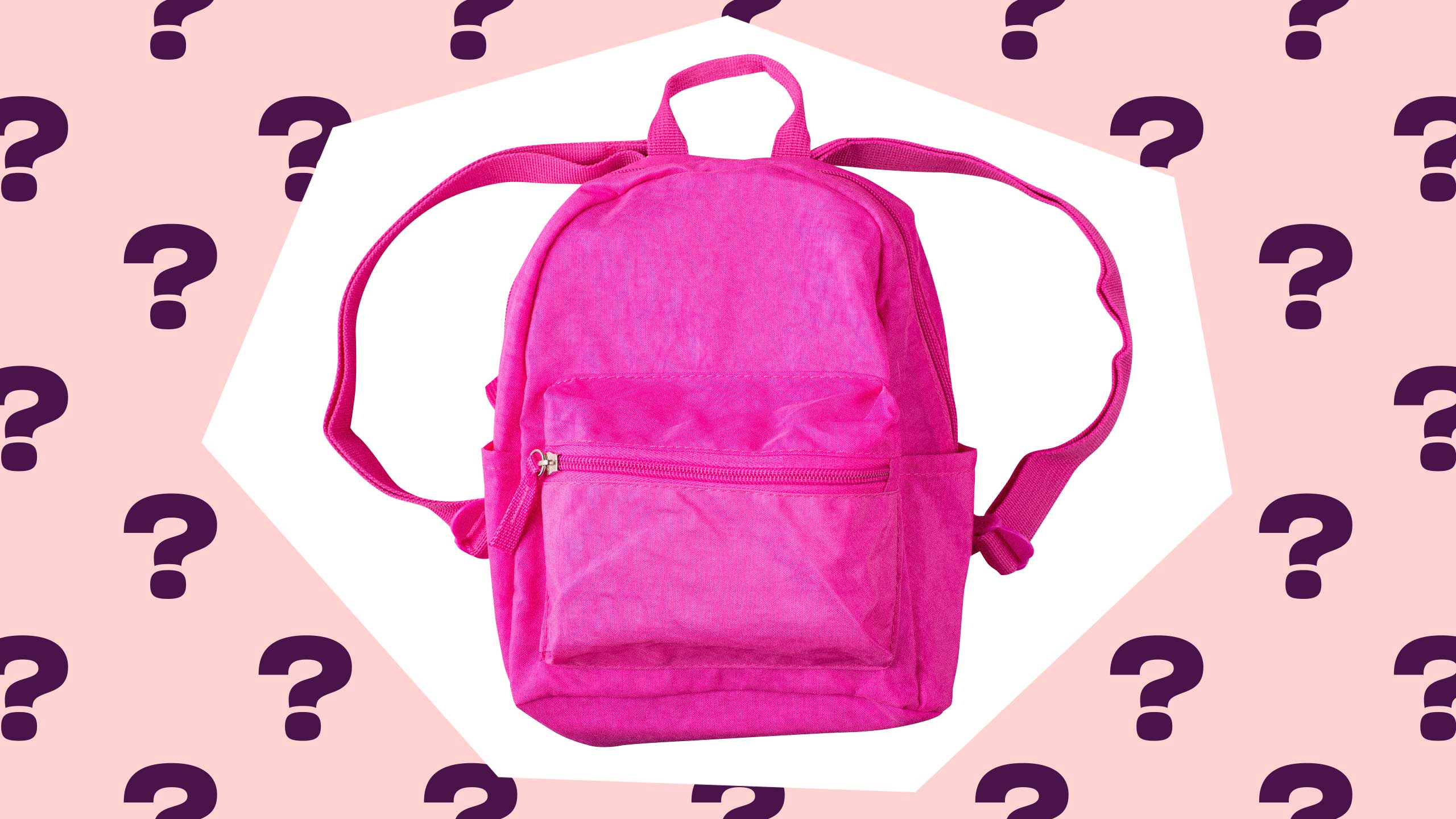
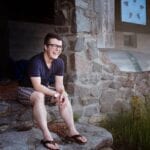
 Why you can trust Xtra
Why you can trust Xtra